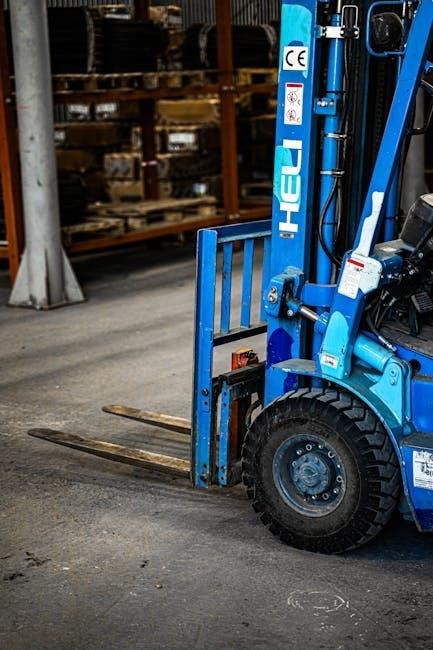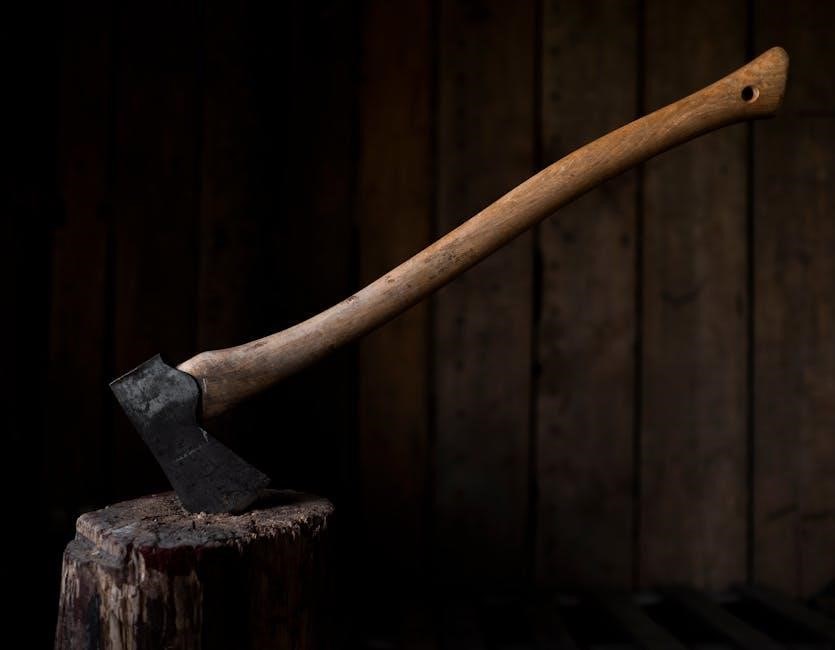Manual handling safety relies on the TILEO acronym, which stands for Task, Individual, Load, Environment, and Other factors. It guides risk assessments to prevent injuries and ensure safe practices in workplaces by evaluating each component systematically.
Overview of Manual Handling and Risk Assessment
Manual handling involves transferring or supporting loads and is a common cause of workplace injuries. Risk assessments are crucial to identify hazards and implement controls. The TILEO acronym—Task, Individual, Load, Environment, and Other factors—provides a structured approach to evaluate manual handling tasks. By analyzing these elements, employers and employees can reduce injury risks. Effective risk assessments ensure tasks are performed safely, adhering to health and safety regulations. This systematic approach helps create a safer working environment and promotes best practices in manual handling operations.
Importance of Acronyms in Manual Handling
Acronyms like TILEO play a vital role in manual handling by simplifying complex risk assessment processes. They provide a memorable framework for identifying potential hazards. By breaking tasks into components, acronyms ensure thorough evaluations, reducing the likelihood of oversight. This structured approach enhances compliance with safety regulations and fosters a proactive safety culture. Acronyms are essential tools for both employers and employees, promoting consistent and effective risk management in manual handling scenarios across various industries.

What Does TILEO Stand For?
TILEO stands for Task, Individual, Load, Environment, and Other factors. This acronym helps assess risks in manual handling by breaking tasks into key components for evaluation.
Breaking Down the TILEO Acronym
TILEO is an acronym that stands for Task, Individual, Load, Environment, and Other factors. Each component plays a crucial role in manual handling risk assessments. The Task involves understanding the activity’s nature, including movements and postures. The Individual assesses the person’s capabilities, such as strength and fitness. The Load evaluates the object’s characteristics, like weight and size. The Environment examines the surroundings, including space and flooring. Other factors consider additional elements like equipment and external pressures. By breaking down each element, TILEO provides a comprehensive framework for ensuring safety and preventing injuries in the workplace.
Understanding Each Component
Each component of TILEO is essential for a thorough risk assessment. The Task involves analyzing the activity’s demands and movements. The Individual considers the person’s physical capabilities and health. The Load assesses the object’s weight, size, and stability. The Environment evaluates the workspace, including flooring and obstacles. Finally, Other factors encompass additional risks like equipment, teamwork, and external pressures. Together, these elements provide a holistic approach to identifying and mitigating hazards in manual handling tasks, ensuring a safer working environment.
Significance of TILEO in Manual Handling
TILEO enhances risk assessment by systematically evaluating tasks, individuals, loads, environments, and other factors, ensuring a comprehensive approach to workplace safety and injury prevention.
Enhanced Risk Assessment with TILEO
TILEO improves risk assessment by breaking down manual handling tasks into key components: Task, Individual, Load, Environment, and Other factors. This structured approach ensures no aspect is overlooked, enabling a thorough evaluation of potential hazards. By focusing on each element, employers and employees can identify risks more effectively, implement appropriate controls, and reduce the likelihood of injuries. TILEO’s comprehensive framework fosters a safer working environment and promotes compliance with health and safety regulations, making it an essential tool for proactive risk management.
Role of TILEO in Preventing Injuries
TILEO plays a crucial role in injury prevention by systematically analyzing each component of manual handling tasks. It helps identify potential risks, such as overexertion or poor posture, before they lead to harm. By addressing these risks through ergonomic adjustments, proper training, or task redesign, TILEO enables employers to create safer working conditions. This proactive approach not only reduces the likelihood of workplace injuries but also fosters a culture of safety and well-being, benefiting both employees and organizations.
The Components of TILEO
TILEO consists of Task, Individual, Load, Environment, and Other factors, providing a structured approach to evaluate risks in manual handling tasks systematically and comprehensively.
Task: Understanding the Nature of the Activity
The “Task” component of TILEO involves analyzing the specific manual handling activity. It assesses the actions required, such as lifting, carrying, or lowering, and the frequency and duration of the task. Evaluating the task helps identify potential risks, like awkward postures or repetitive movements, which can strain the body. Understanding the task’s demands ensures that appropriate measures are taken to minimize hazards, making it a crucial step in the risk assessment process. This focus helps create safer working conditions by addressing the root causes of potential injuries.
Individual: Assessing the Person’s Capabilities
The “Individual” aspect of TILEO focuses on evaluating the person performing the task. This includes assessing their physical strength, fitness level, and any physical limitations or health conditions. It also considers the individual’s training, experience, and familiarity with the task. By understanding the person’s capabilities, employers can ensure that workers are suitably matched to the demands of the task, reducing the risk of injury. This step emphasizes the importance of personal assessment in maintaining workplace safety and promoting employee well-being.
Load: Evaluating the Object’s Characteristics
The “Load” in TILEO refers to the object being handled. It involves assessing its weight, size, shape, and stability to determine if it can be safely moved. Factors like balance, grip, and whether the load is uneven or difficult to grasp are critical. Additionally, the frequency of handling and the distance it needs to be carried are considered. Understanding these characteristics helps identify potential hazards and ensures the task is planned safely, reducing the risk of injury to the person handling the load.
Environment: Examining the Surroundings
The “Environment” in TILEO involves assessing the workspace and conditions where the manual handling task takes place. This includes evaluating floor surfaces for slip hazards, obstacles that could cause tripping, and the availability of space to move safely. Lighting levels, temperature, and humidity are also considered, as they can affect grip and comfort. Additionally, the layout of the area, such as stairs or uneven terrain, plays a role in determining the safety of the task. A thorough environmental assessment helps identify and mitigate potential risks, ensuring a safer working environment for all individuals involved.
Other Factors: Additional Considerations
The “Other Factors” in TILEO address elements beyond the core components of Task, Individual, Load, and Environment. These include personal protective equipment (PPE), team dynamics, and the reliability of equipment or tools used in the task. Additionally, this category considers the availability of assistance, such as mechanical aids or colleagues, and the overall workplace culture toward safety. These factors ensure a comprehensive risk assessment, accounting for variables that might not fit neatly into the other categories but are crucial for ensuring a safe manual handling process and preventing potential injuries. This step emphasizes adaptability and thoroughness in evaluating all possible risks.

Importance of TILEO in Risk Assessment
TILEO provides a structured approach to identifying and mitigating risks in manual handling, ensuring a comprehensive evaluation of all factors to prevent injuries and enhance workplace safety.
Comprehensive Evaluation of Hazards
The TILEO framework ensures a thorough assessment of all potential risks in manual handling tasks. By evaluating the Task, Individual, Load, Environment, and Other factors, it identifies hazards comprehensively. This structured approach helps in pinpointing specific risks, such as load weight, individual capabilities, and environmental obstacles. It also considers postural constraints, vertical lift zones, and torso twisting, ensuring no detail is overlooked. This holistic evaluation enables effective mitigation strategies, reducing the likelihood of injuries and promoting a safer working environment for all employees involved in manual handling activities.
Ensuring a Safe Working Environment
TILEO plays a crucial role in creating a safe working environment by breaking down manual handling tasks into key components. It assesses the Task, Individual, Load, Environment, and Other factors to identify risks. By evaluating these elements, employers and employees can implement controls to reduce hazards. TILEO ensures that workplaces are adapted to individual capabilities, loads are manageable, and environments are free from obstacles. This systematic approach not only minimizes injury risks but also fosters a culture of proactive safety, aligning with legal and regulatory standards for workplace safety.

How TILEO Differs from TILE
TILEO differs from TILE by adding “Other factors,” expanding the risk assessment to include additional elements beyond Task, Individual, Load, and Environment.
Evolution from TILE to TILEO
The transition from TILE to TILEO represents an advancement in manual handling risk assessment. Originally, TILE focused on Task, Individual, Load, and Environment. Over time, practitioners recognized the need to account for additional variables that could influence safety. This led to the development of TILEO, which incorporates “Other factors” such as workplace culture, equipment, and external conditions. This evolution ensures a more comprehensive evaluation of risks, addressing a broader range of potential hazards and enhancing overall safety in manual handling tasks.
The Added Dimension of ‘Other Factors’
The inclusion of “Other factors” in TILEO expands the scope of manual handling assessments. This dimension accounts for elements like workplace culture, equipment maintenance, and external conditions. It ensures that unforeseen risks, such as team dynamics or environmental hazards, are considered. By addressing these factors, TILEO provides a more holistic approach to safety, reducing oversight and enhancing the effectiveness of risk evaluations in diverse workplace settings.

Practical Applications of TILEO
TILEO is widely applied in assessing manual handling tasks, ensuring safety and efficiency. It is integrated into workplace training programs, helping employees identify risks and adopt safer practices.
Assessing Specific Manual Handling Tasks
When evaluating specific tasks, TILEO helps identify risks by examining each component. The Task involves understanding the activity’s requirements, while the Individual assesses the worker’s capabilities. The Load considers weight and dimensions, and the Environment evaluates workspace conditions. Additionally, Other factors such as equipment and external pressures are reviewed. This comprehensive approach ensures hazards are pinpointed, allowing for targeted interventions to enhance safety and efficiency in manual handling operations. By systematically applying TILEO, workplaces can reduce injury risks and improve overall task execution.
Implementing TILEO in Workplace Training
Integrating TILEO into workplace training enhances employee awareness and safety practices. Training programs often include interactive sessions where workers learn to apply each component—Task, Individual, Load, Environment, and Other factors—to real-life scenarios. This hands-on approach ensures employees can identify risks and adopt preventive measures. By incorporating TILEO into regular training, organizations foster a proactive safety culture, reducing injuries and improving compliance with health and safety regulations. Regular refresher courses further reinforce these principles, ensuring sustained adherence to manual handling best practices across all levels of the workforce.
Legal and Regulatory Considerations
Adhering to TILEO aligns with health and safety laws, ensuring employers meet regulatory requirements for manual handling. Compliance reduces legal risks and promotes workplace safety standards effectively.
Compliance with Health and Safety Regulations
Using TILEO ensures adherence to health and safety regulations by systematically assessing manual handling risks. Employers can demonstrate compliance with legal standards, reducing potential liabilities. TILEO aligns with regulatory requirements, promoting a structured approach to risk management. By integrating TILEO into workplace practices, organizations meet mandatory safety protocols and foster a culture of compliance. This proactive method not only satisfies legal obligations but also enhances overall workplace safety, ensuring adherence to industry standards and best practices in manual handling operations.
Industry Standards and TILEO
TILEO aligns with industry standards by providing a comprehensive framework for manual handling risk assessments. It complements existing guidelines, ensuring consistency across sectors. By adopting TILEO, organizations meet recognized benchmarks for safety, enhancing their reputation and operational efficiency. This alignment not only streamlines safety protocols but also supports continuous improvement in workplace practices, making it a valuable tool for maintaining high industry standards in manual handling tasks and beyond.

Training and Education
TILEO is integrated into employee training programs, enabling workers to understand and apply its components effectively. Regular refreshers and practical exercises ensure ongoing safety and compliance.
Integrating TILEO into Employee Training Programs
Training programs emphasize TILEO to ensure employees understand its components. Each element—Task, Individual, Load, Environment, and Other factors—is taught through interactive sessions and real-life scenarios. Practical exercises help workers apply TILEO in daily tasks, reducing injury risks and fostering a safety-focused culture. Regular refreshers reinforce knowledge, ensuring compliance with health and safety standards. This structured approach equips employees with the skills to assess and mitigate manual handling risks effectively, promoting workplace safety and efficiency.
Best Practices for Effective Training
Effective training incorporates hands-on exercises, real-life simulations, and group discussions to engage employees. Visual aids like videos and diagrams enhance understanding of TILEO principles. Providing immediate feedback during practical sessions helps refine techniques. Encouraging open questions fosters a learning environment. Regular refreshers and updates ensure sustained knowledge retention. Recognizing improvements motivates employees to adopt safe practices. Personalized training addresses individual needs, while team-based activities promote collective responsibility for safety. These practices ensure employees are well-equipped to apply TILEO effectively in their daily tasks.
TILEO is a cornerstone of modern manual handling practices, offering a structured approach to risk assessment and injury prevention by evaluating Task, Individual, Load, Environment, and Other factors.
Summarizing the Role of TILEO
TILEO stands for Task, Individual, Load, Environment, and Other factors, providing a comprehensive framework for manual handling risk assessments. It helps identify and mitigate hazards by evaluating each component systematically. This approach ensures a thorough understanding of the task’s demands, the individual’s capabilities, the load’s characteristics, the environment’s conditions, and additional factors that might influence safety. By addressing all these elements, TILEO plays a crucial role in preventing injuries and promoting a safer working environment. Its structured methodology makes it an essential tool for effective manual handling practices.
Future of Manual Handling Risk Assessment
The future of manual handling risk assessment lies in advancing tools like TILEO, which integrate technology and ergonomic insights. AI-driven systems may enhance real-time monitoring, while wearable devices could provide personalized feedback; Increased focus on task-specific training and adaptive assessments will likely become standard. These innovations aim to reduce injuries further by tailoring strategies to individual and environmental needs, ensuring safer, more efficient workplaces; The evolution of such frameworks will continue to prioritize worker well-being and operational efficiency in dynamic work environments.

References
Key Sources and Further Reading
Key sources include the UK Health and Safety Executive (HSE) guidelines, industry reports, and academic studies on manual handling and ergonomics. Further reading materials are available online.
Key sources for understanding TILEO include the UK Health and Safety Executive (HSE) guidelines, industry safety manuals, and academic studies on ergonomics. The HSE’s “Manual Handling at Work” guide provides detailed insights into the TILEO framework. Additional resources can be found in occupational health journals and workplace safety training materials. Online publications and safety forums also offer practical examples and case studies. For further reading, explore government health and safety websites or access academic databases specializing in workplace ergonomics and risk management.
